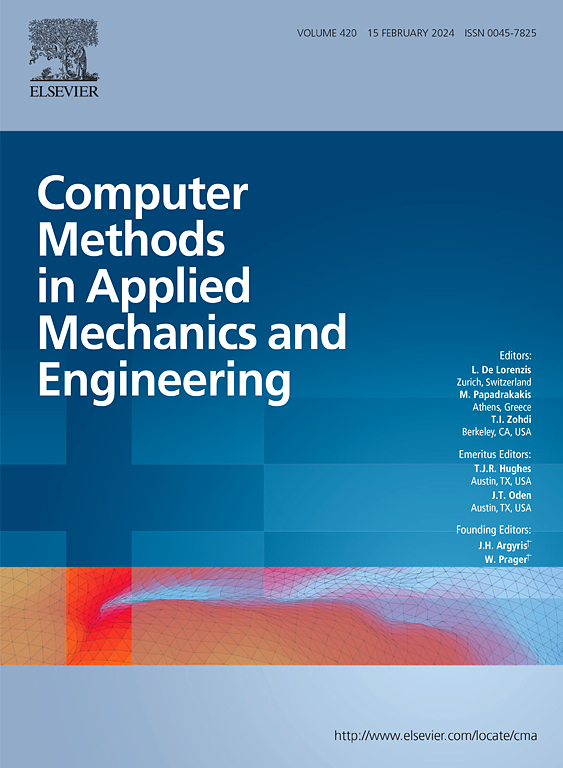An energy-based virtual element method framework for polycrystalline plasticity
IF 7.3
1区 工程技术
Q1 ENGINEERING, MULTIDISCIPLINARY
Computer Methods in Applied Mechanics and Engineering
Pub Date : 2025-07-23
DOI:10.1016/j.cma.2025.118161
引用次数: 0
Abstract
Deformation in an aggregate of single crystalline grains, in conventional crystal plasticity finite element methods, is modeled through the collective behavior of individual ones each consisting of multiple elements. Such a procedure often entails tedious preparedness such as grain-level discretization and post-processing to obtain meaningful collective behavior. Virtual Element Method (VEM) which is designed to take care of a multifaceted three-dimensional body as one element, offers a promising alternative for crystal plasticity modeling. In this paper, we implement a phenomenological, rate-dependent crystal plasticity model within the framework of the energy-based VEM. By integrating nested iterative algorithms with automatic differentiation techniques, the numerical procedure efficiently simulates both single-crystal and polycrystalline solids under various loading conditions. With three numerical examples, we demonstrate the ability of VEM based crystal plasticity modeling to predict stress–strain responses, texture evolutions, and deformation mechanisms in face-centered cubic crystals. This numerical procedure shows a promising method of modeling polycrystalline solids composed of a vast amount of grains, and paves a new route of two-scale modeling which bridges microstructures with macroscopic mechanical behavior of solids.
基于能量的多晶塑性虚元方法框架
在传统的晶体塑性有限元方法中,单晶晶粒的变形是通过由多个元素组成的单个晶粒的集体行为来建模的。这样的程序通常需要繁琐的准备工作,如颗粒级离散化和后处理,以获得有意义的集体行为。虚拟元法(Virtual Element Method, VEM)是一种将多面三维体作为一个单元来处理的方法,为晶体塑性建模提供了一种很有前途的替代方法。在本文中,我们在基于能量的VEM框架内实现了一个现象学的、速率相关的晶体塑性模型。通过将嵌套迭代算法与自动微分技术相结合,有效地模拟了不同载荷条件下的单晶和多晶固体。通过三个数值例子,我们证明了基于VEM的晶体塑性建模能够预测面心立方晶体的应力应变响应、织构演变和变形机制。该数值模拟方法为模拟由大量晶粒组成的多晶固体提供了一种很有前途的方法,并开辟了一条连接固体微观结构和宏观力学行为的双尺度模拟新途径。
本文章由计算机程序翻译,如有差异,请以英文原文为准。
求助全文
约1分钟内获得全文
求助全文
来源期刊
CiteScore
12.70
自引率
15.30%
发文量
719
审稿时长
44 days
期刊介绍:
Computer Methods in Applied Mechanics and Engineering stands as a cornerstone in the realm of computational science and engineering. With a history spanning over five decades, the journal has been a key platform for disseminating papers on advanced mathematical modeling and numerical solutions. Interdisciplinary in nature, these contributions encompass mechanics, mathematics, computer science, and various scientific disciplines. The journal welcomes a broad range of computational methods addressing the simulation, analysis, and design of complex physical problems, making it a vital resource for researchers in the field.

 求助内容:
求助内容: 应助结果提醒方式:
应助结果提醒方式:


